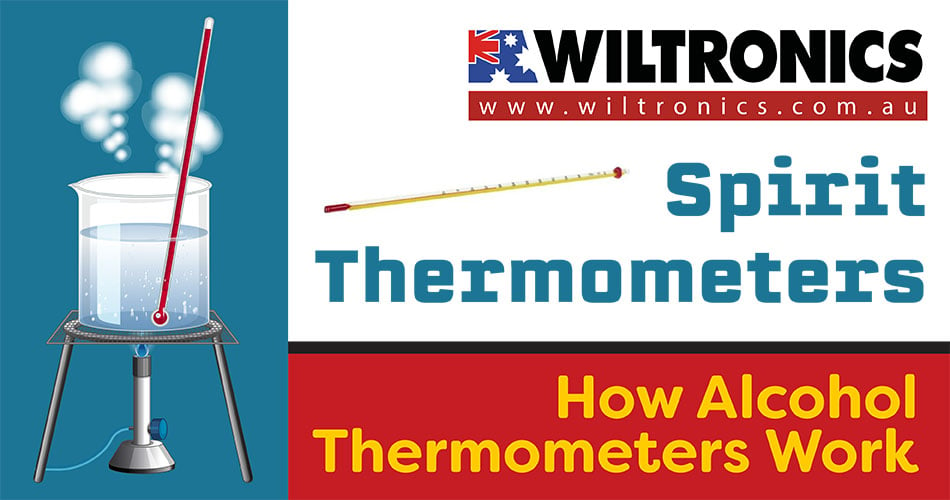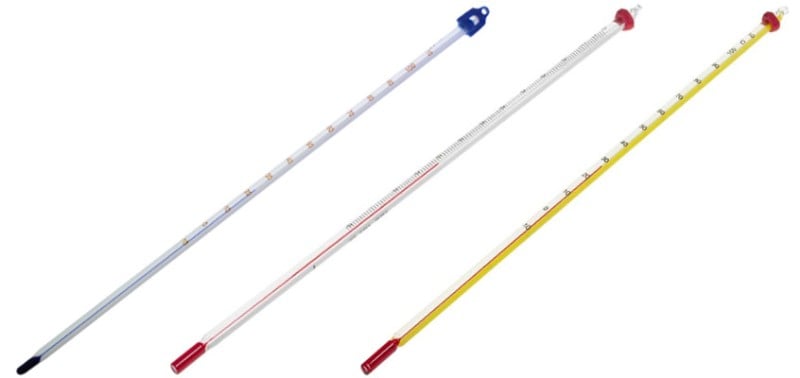Spirit Thermometers: How Alcohol Thermometers Work
April 18, 2023

Thermometers have been around for centuries. Over time, various models have been developed, and one of them is the alcohol variety. Focusing on what alcohol thermometers are, keep reading to learn how they work and their uses!
Thermometers Explained
A thermometer is an instrument used for measuring the temperature. It comes in a long, glass tube form with a capillary tube to hold liquid. This liquid is usually mercury or alcohol. The scale measures the expansion and contraction of rising and falling temperatures.
Thermometers are common in homes, laboratories, and industrial settings. They are handy for many purposes, such as measuring the temperature of the:
- human body
- food
- chemical reactions
- air leaks
- indoors/outdoors
This makes them especially important in scientific research, medical practice, and manufacturing.
What Are Alcohol Thermometers?
Alcohol thermometers are usually petite-sealed glass tubes, also called spirit thermometers. They come with a small hollow bulb on one end and a thin capillary opening. The bulb and connected capillary chamber are filled with ethanol or isopropyl. The alcohol extends into the narrow column at normal room temperatures.
The alcohol, as the temperature-sensitive liquid, expands or contracts as the temperature changes. This causes the fluid to rise or fall, from -115°C (low freezing temp) to 78°C (high boiling temp), depending on the model.
Alcohol thermometers are often preferred over mercury due to their lower toxicity. Their wider temperature range also adds up to their advantages. But keep in mind that they are more fragile and can be affected by changes in atmospheric pressure.
The working principle
Alcohol thermometers work by utilising the physical properties of alcohol. The alcohol expands and contracts with temperature changes. The thermometer contains a bulb at the bottom filled with a specific amount of liquid. There is also a narrow tube extending upward from the bulb, a.k.a. the capillary.
As the temperature increases, the alcohol in the bulb expands and rises the tube. This indicates the temperature on a scale. Conversely, as the temperature decreases, the alcohol contracts and lowers in the tube. This signs a lower temperature.
At normal room temperatures, the alcohol will extend into the capillary’s narrow column.
Note: Markers along the capillary state the temperature. To read, find the marker which corresponds to the meniscus of the fluid inside the capillary.
What Does an Alcohol Thermometer Look Like?
Considering alcohols are clear, a dye is usually added to the alcohol for contrast. The same goes for the backing of the thermometer so that the meniscus of the fluid will be clearly visible. Red is a common colour, although other shades may also be used.
You can also get alcohol thermometers in a casing that protects them from the following:
- impact
- fluke temperature fluctuations
If you are looking for a reliable and handy spirit thermometer, whether for home or lab use, check this out:

Spirit Thermometer -10° to 110°C
A mercury-free, antiroll spirit thermometer filled with non-hazardous blue- or red-spirit liquid. Easy to read and is available in white and yellow backing colours with brown or black markings.
Different Types of Alcohol Use
The main key point of alcohol thermometers is the alcohol itself. They use the expansion and contraction of alcohol as the temperature changes. But did you know that there are different varieties for different conditions?
1. Ethanol
Ethanol is one of the most common types used in alcohol thermometers. It has a freezing point of -114°C and a boiling point of 78 degrees Celsius. This makes it ideal for use in a wide range of temperature measurements.
2. Methanol
Methanol is another type of alcohol used in alcohol thermometers. It has a freezing point of -97.6°C and a boiling point of 64.7 degrees Celsius. This makes it useful for measuring temperatures in a range of -97.6°C to 64.7°C.
3. Isopropyl
Isopropyl alcohol, also known as rubbing alcohol, is also a popular variety used. It has a freezing point of -88°C and a boiling point of 83 degrees Celsius. It is suitable for measuring temperatures from -88°C to 83°C.
4. Propylene glycol
Propylene glycol has a freezing point of -60°C and a boiling point of 188 degrees Celsius. It works well for measuring temperatures in a range of -60°C to 188°C.
5. Butanol
Finally, butanol has a freezing point of -89°C and a boiling point of 118 degrees Celcius. It can measure temperatures in a range of -89°C to 118°C.
The type of alcohol used in alcohol thermometers can affect their accuracy and range. By understanding each kind, you can choose the right one for your specific needs.
Mercury vs Alcohol Thermometers
Mercury and alcohol are two thermometers composed of a bulb and a marked glass tube. The main difference between the two is 1.) the bulb of the mercury thermometer is filled with mercury, and 2.) the bulb of the alcohol thermometer is filled with alcohol.
Unlike alcohol, mercury is a good conductor of heat, so it can measure even high temperatures. But it cannot measure cold temperatures. Its content, however, is highly toxic. If the bulb breaks and mercury leaks out, it won’t be safe for humans and the environment and could even pose a threat
Alcohol, in contrast, is less toxic and hence high on safety factors. It also has a greater value of temperature coefficient of expansion than mercury.
The Bottom Line
Digital thermometers have become the norm these days. Yet, alcohol thermometers still have their place in certain applications. When investing in one, make sure to buy a quality model from a reputed brand or supplier like Wiltronics.
© Electrotech Brands Pty Ltd 2023


Write a Comment
You must be logged in to post a comment.